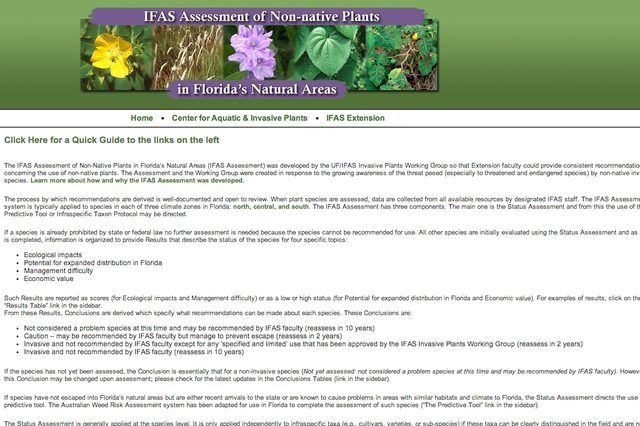Bulbs
Flower Basics
Flower Beds & Specialty Gardens
Flower Garden
Garden Furniture
Garden Gnomes
Garden Seeds
Garden Sheds
Garden Statues
Garden Tools & Supplies
Gardening Basics
Green & Organic
Groundcovers & Vines
Growing Annuals
Growing Basil
Growing Beans
Growing Berries
Growing Blueberries
Growing Cactus
Growing Corn
Growing Cotton
Growing Edibles
Growing Flowers
Growing Garlic
Growing Grapes
Growing Grass
Growing Herbs
Growing Jasmine
Growing Mint
Growing Mushrooms
Orchids
Growing Peanuts
Growing Perennials
Growing Plants
Growing Rosemary
Growing Roses
Growing Strawberries
Growing Sunflowers
Growing Thyme
Growing Tomatoes
Growing Tulips
Growing Vegetables
Herb Basics
Herb Garden
Indoor Growing
Landscaping Basics
Landscaping Patios
Landscaping Plants
Landscaping Shrubs
Landscaping Trees
Landscaping Walks & Pathways
Lawn Basics
Lawn Maintenance
Lawn Mowers
Lawn Ornaments
Lawn Planting
Lawn Tools
Outdoor Growing
Overall Landscape Planning
Pests, Weeds & Problems
Plant Basics
Rock Garden
Rose Garden
Shrubs
Soil
Specialty Gardens
Trees
Vegetable Garden
Yard Maintenance
How to Care for a Schefflera Plant
How to Care for a Schefflera Plant. Schefflera (Schefflera spp.) plants are native to Taiwan, Australia and New Guinea, where they take on characteristics ranging from low shrubs to large trees. In the United States, their low maintenance, unique pinwheel foliage and resistance to diseases and pests make them suitable as indoor potted plants. Some...
Schefflera (Schefflera spp.) plants are native to Taiwan, Australia and New Guinea, where they take on characteristics ranging from low shrubs to large trees. In the United States, their low maintenance, unique pinwheel foliage and resistance to diseases and pests make them suitable as indoor potted plants. Some schefflera species can be attractive outdoor accent plants in U.S. Department of Agriculture plant hardiness zones 10 through 12, according to the Missouri Botanical Garden website.
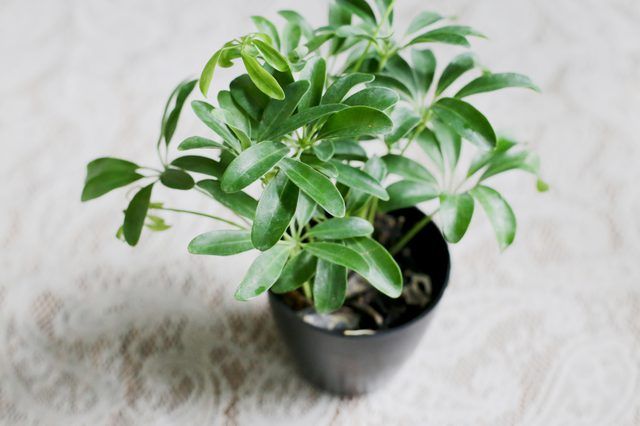
Place indoor scheffleras in a warm, sunny spot with protection from the afternoon sun. Since they are tropical plants, keep the temperature from dropping below 60 degrees Fahrenheit. Scheffleras grown in gardens can handle conditions ranging from full sun to partial shade, but full sun is required for certain varieties, such as Schefflera actinophylla (USDA zones 10 through 12), to flower. Dwarf scheffleras (Schefflera arboricola, USDA zones 9 through 11) can manage full sun to deep shade and make excellent fast-growing hedge plants.
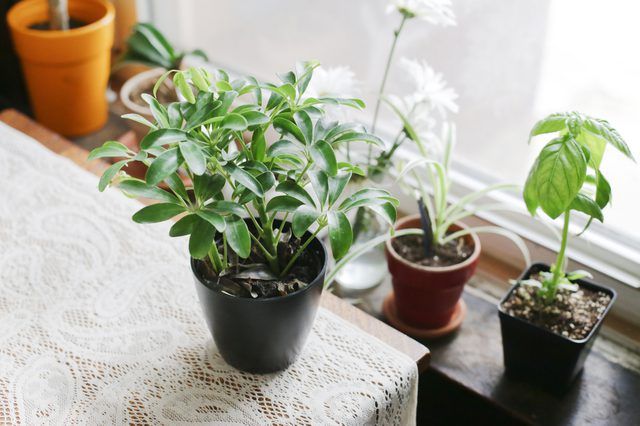
Indoor scheffleras like high humidity. In dry areas or seasons, mist the plants with water to maintain humidity levels in the room. Water scheffleras thoroughly when the soil is nearly dry. Don't overwater and don't allow water to stand in the saucer of indoor plants. Garden scheffleras prefer light, sandy, well-drained soils, although schefflera trees (Schefflera actinophylla) will tolerate occasional wet conditions. All scheffleras require less water during the dormant fall and winter seasons. Excessive rain or overwatering can cause droopy foliage and root rot. Use a well-draining potting medium for containerized plants and water garden-grown plants weekly.
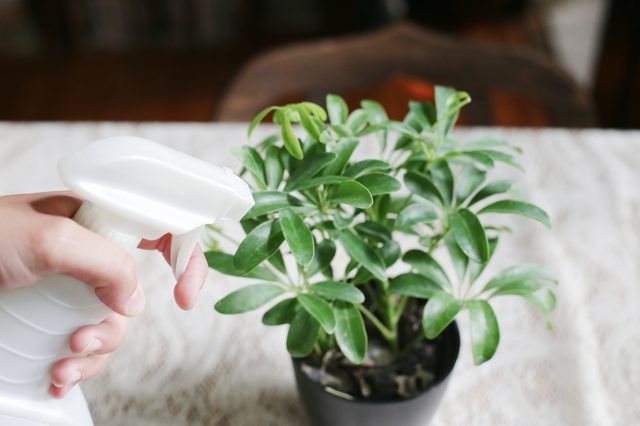
Feed indoor and garden-grown schefflera plants at the beginning and throughout the growing season. Use an all-purpose slow-release plant food or water-soluble fertilizer, such as a 9-3-6 or 18-6-12 mix. Sprinkle 1 teaspoon of a slow-release blend evenly over the container's soil and water thoroughly, reapplying every six to eight weeks, or as directed by the instructions on the package. Dilute 1 teaspoon of a water-soluble blend in 1 gallon of water and pour over the soil, reapplying every three to four weeks, or as recommended by the directions on the package. Proper fertilization reduces the possibility of the development of leaf spot and tall, spindly growth with light green foliage.
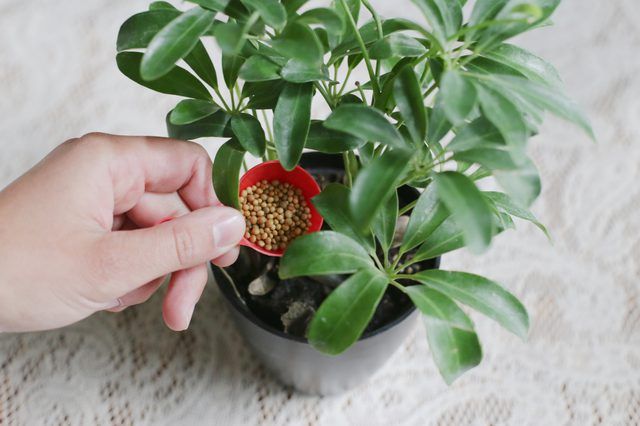
Scheffleras suffer from few diseases or pests, but if you notice silken webbing; brown, streaked, curled or crinkled leaves; or waxy discs on your plant, check for mealybugs, aphids, spider mites, thrips and scales. The University of Missouri Extension website recommends washing the infested portion of the schefflera with a solution of 2 teaspoons mild detergent per gallon of water. Apply the mix using either a soft cloth or a brush, thoroughly covering the infested areas. Reapply weekly if required. Indoor scheffleras are more prone to insect infestations than those grown outdoors.
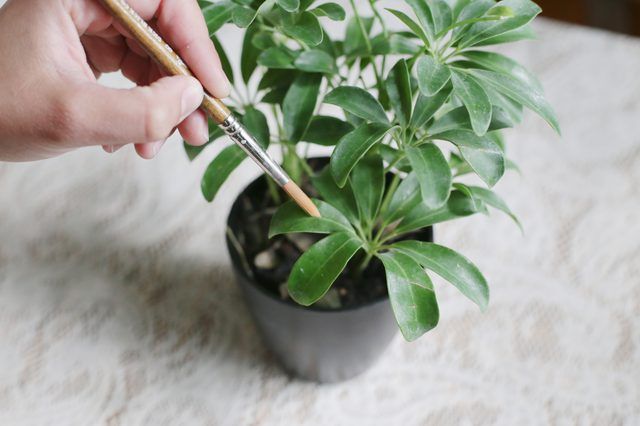
The leaves and sap of scheffleras are mildly toxic, according to the North Carolina State University Cooperative Extension website. Ingestion could cause vomiting, numbness or tingling in the mouth, and it may affect coordination. The sap can also cause minor skin irritation. The effects typically don't last long in humans. If it's ingested, call your local poison control center. Scheffleras are toxic to dogs and cats if eaten. Indications of schefflera poisoning include irritation and intense burning around the animal's mouth, lips and tongue. The animal might vomit, drool excessively or have trouble swallowing. If you suspect your pet has schefflera poisoning, the ASPCA recommends contacting your veterinarian.
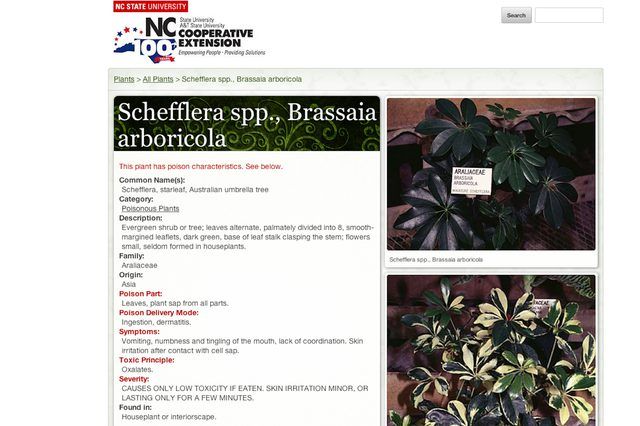
A garden-grown schefflera tree has weak wood and requires pruning to develop a strong structure, which is why it's unsuitable for planting close to structures. As the plant matures, it loses its lower leaves, developing into a tree form. During the growing season, top the plant with loppers so it develops multiple trunks and a stronger base. A schefflera shrub has stronger wood but requires frequent pruning during the growing season to control its shape and size. Use pruning shears or loppers and trim the plant back by one-third. Prune indoor plants as needed to control size or remove dead limbs. Always sterilize all pruning tools so disease isn't transferred to healthy plants by wiping the blades with alcohol and allowing them to dry before using.
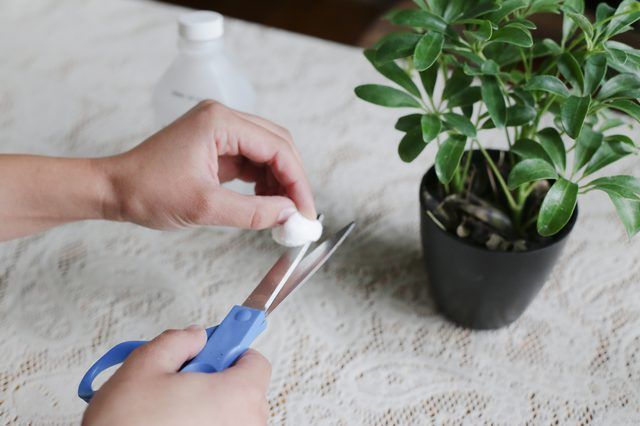
Australian umbrella trees (Schefflera actinophylla) are classified as invasive for central and south Florida, according to the IFAS Assessment of Non-Native Plants in Florida’s Natural Areas. This plant is not considered invasive in Florida's north zone.
